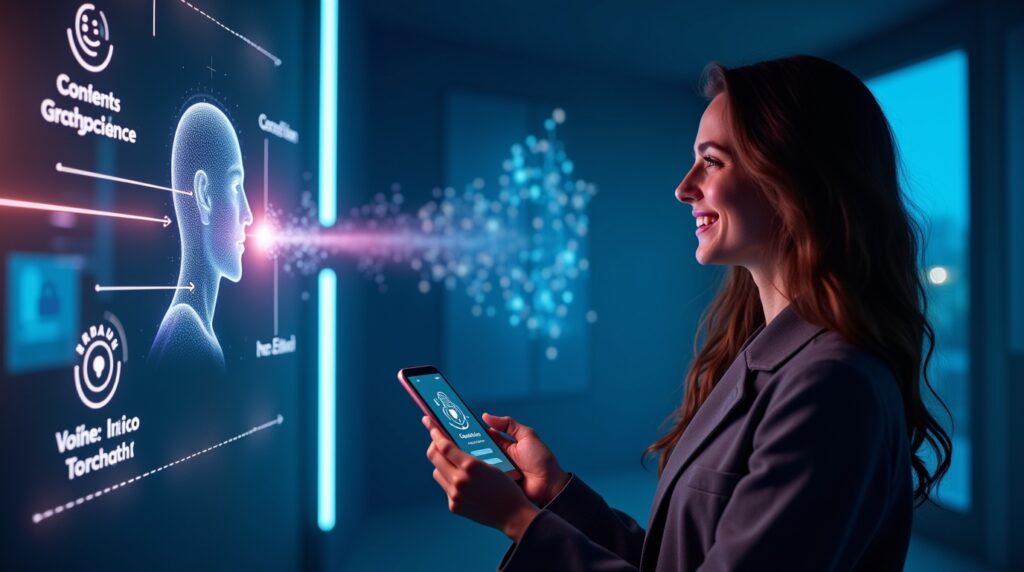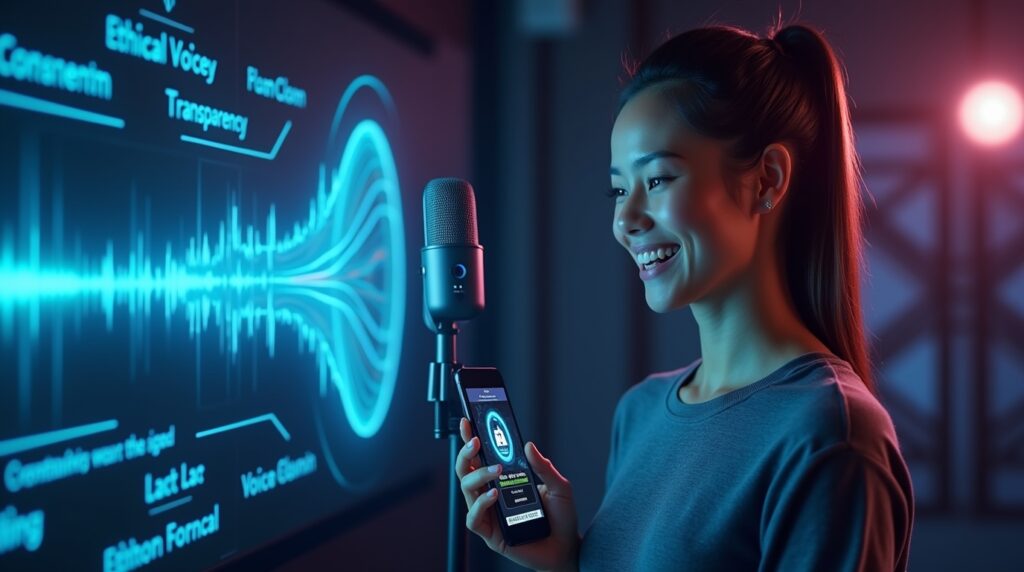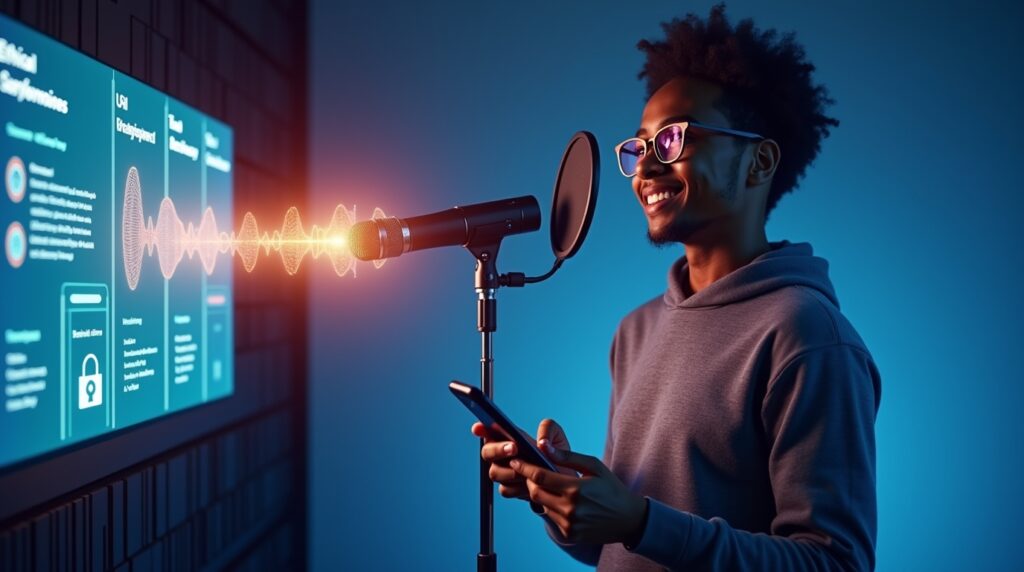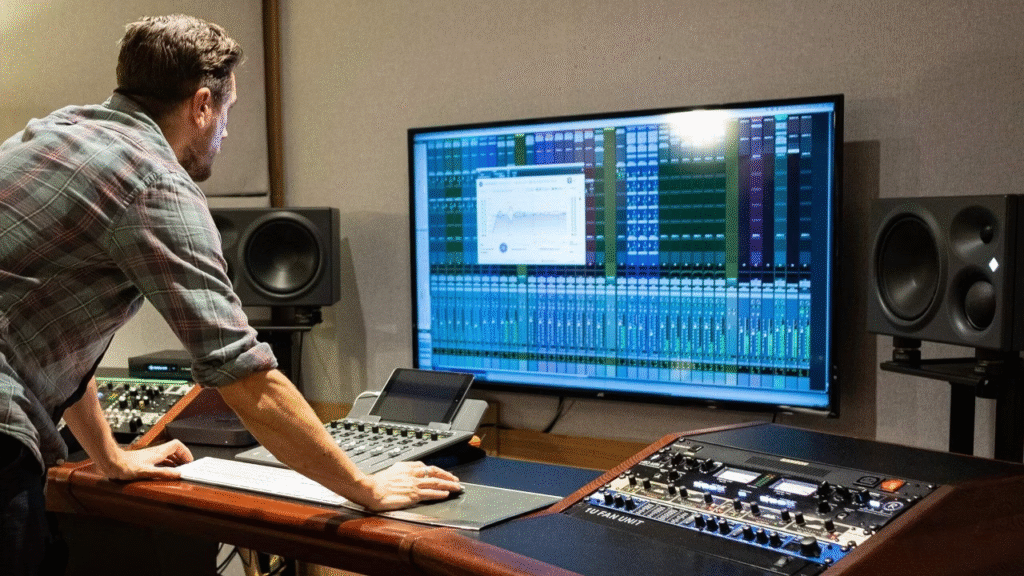Introduction
Just consider the possibility of having your own AI where your voice can read you an audiobook or even answer your messages without you having to say a single word. Thanks to advancements in AI voice cloning, this sci-fi fantasy is now a reality. But how can you create an AI clone of your voice ethically?

This guide shall set out to examine:
✅ Best AI voice cloning tools (free & paid)
✅ Step-by-step voice replication process
✅ Ethical considerations & legal safeguards
✅ Fun & practical uses for your AI voice double
Whether you’re a content creator, podcaster, or just curious about AI experiments, this guide will help you clone your voice responsibly. “Curious about AI’s creative potential? Explore how Another AI Application is changing the game.”
Why Clone Your Voice? (Beyond Just Fun!)
Let us look at why people are cloning voices using AI before getting into how:

1. Content Creation
- Generate audiobooks, podcasts, or YouTube narrations in your voice—without re-recording.
Correct minor record mistakes without the necessity to re-speak whole sentences.
2. Accessibility
- People with speech disabilities can preserve their voice before it changes.
AI voice clones may help the people who lose the voice because of the sickness.
3. Business & Branding
- Maintain consistent brand voice in ads and IVR systems.
Transpose multilingual voiceovers even though retaining your vocal identity.
4. Personal Use
- Text-to-speech (TTS) for messages (e.g., AI reads your texts aloud in your voice).
- Voice memos from the future? (Imagine leaving AI-generated messages for loved ones.)
But with great power comes great responsibility—let’s ensure we clone voices ethically.
Ethical & Legal Considerations
Prior to making an AI voice clone, the question is:

✅ Is It Legal?
- Yes, if you own the voice data (i.e., cloning your own voice).
- No, if cloning someone else without consent (legal risks apply).
✅ Is It Ethical?
- Transparency matters: Disclose when an AI voice is used (e.g., “This podcast intro is AI-generated”).
- Avoid misuse: Deepfake voices for scams or misinformation harm trust.
✅ How to Stay Safe?
- Use trusted platforms (avoid shady voice-cloning apps).
- Watermark AI audio (some tools embed detectable signatures).
Now, let’s get into the step-by-step process.
Step 1: Choose the Right AI Voice Cloning Tool
Here are the best ethical tools for cloning your voice:

1. ElevenLabs (Best for Realism)
- 🎙️ Pros: Ultra-realistic, emotion control, 30+ language support.
- 💰 Pricing: Free tier (limited), paid plans from $5/month.
2. Resemble.AI (Best for Developers)
- 🎙️ Pros: API access, instant voice cloning, consent verification.
- 💰 Pricing: Free trial, custom pricing.
3. Play.ht (Best for Bloggers)
- 🎙️ Pros: WordPress plugin, commercial use rights.
- 💰 Pricing: Free (credit-based), $15+/month.
4. Descript Overdub (Best for Editing)
- 🎙️ Pros: Edit recordings by typing, natural-sounding clones.
- 💰 Pricing: $12/month (free trial available).
5. iMyFone MagicMic (Best for Fun)
- 🎙️ Pros: Real-time voice changing, 100+ voice filters.
- 💰 Pricing: Free & paid versions.
Recommendation: For high-quality cloning, ElevenLabs is the best. For fun experiments, try iMyFone.
Step 2: Record Your Voice Samples
AI needs clean, diverse voice data to mimic you accurately. Read the following tips:

🗣️ Ideal Recording Setup:
- Use a good microphone (even a smartphone works).
- Record in a quiet room (no background noise).
- Speak naturally (don’t over-act).
📝 What to Record?
- 5-10 minutes of varied speech (read a book, speak spontaneously).
- Include different tones (happy, serious, questioning).
- Cover common words you use often.
Pro Tip: Some tools (like ElevenLabs) let you upload existing recordings (e.g., podcast clips).
Step 3: Upload & Train Your AI Voice Model

This is the way the majority of tools take place:
- Upload voice samples (MP3/WAV files).
- Name your voice model (e.g., “My Professional Voice”).
- Adjust settings (stability, clarity, emotion).
- Generate test audio to fine-tune.
⚠️ Caution: Avoid overfitting—if your AI voice sounds robotic, add more voice samples.
Step 4: Test & Refine Your AI Voice
After training, experiment with different inputs:

- Try text-to-speech (e.g., “Read this tweet in my voice”).
- Test emotional tones (e.g., excited vs. calm delivery).
- Check language adaptability (if cloning multilingual speech).
Example Prompt:
“Hey everyone! Hello to my podcast. Today, we’re discussing AI voice cloning—get ready for some mind-blowing tech!”
If it sounds unnatural, tweak the AI’s “similarity” and “stability” sliders.
Step 5: Use Your AI Voice Ethically
Now that your AI voice is ready, here’s how to use it responsibly:

✅ Do:
- Label AI-generated content (“AI Voice Clone” disclaimer).
- Use it for personal projects, accessibility, or business branding.
- Keep consent in mind (don’t clone others without permission).
❌ Don’t:
- Impersonate someone for fraud or misinformation.
- Use it in legal or official documents (e.g., contracts).
Fun & Creative Uses for AI Voice Cloning
Beyond practicality, here are entertaining experiments:

1. Sing Like a Pro (Even If You Can’t)
- Clone your voice, then use Vocaloid AI to make it sing.
2. Prank Your Friends (Ethically!)
- Send an AI-voiced meme message (e.g., “I’ve turned into a robot—beep boop!”).
3. Bring Fictional Characters to Life
- Train an AI on movie dialogues (for fan projects, not piracy).
4. Multilingual Voiceovers
- Use ElevenLabs’ dubbing to speak fluent Spanish, French, etc.
Future of AI Voice Cloning
What happens next in voice synthesis?
🔮 Emotion-aware voices (AI detects mood from text).
🔮 Instant voice swaps (real-time Zoom call voice changing).
🔮 Voice NFTs (own your digital voice as an asset).
Final Thoughts
Creating an AI clone of your voice is now easier than ever—but ethics matter. Use this tech transparently, avoid misuse, and have fun experimenting!
Want to try it? Start with ElevenLabs’ free plan and see how close AI gets to your real voice.
Have you tried voice cloning? Share your experiences below!
🚀 Follow for more AI experiments!
Email: adil.taskthegroup@gmail.com











